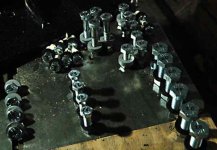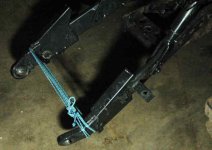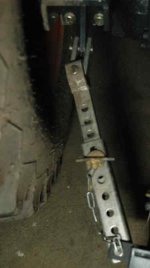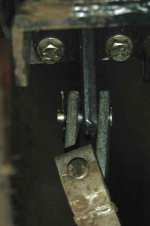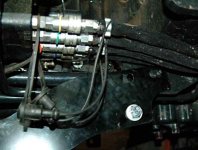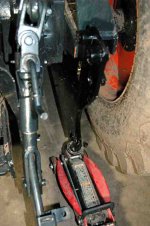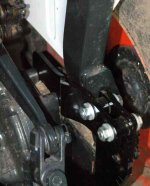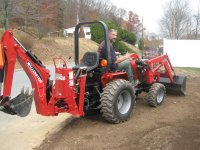DaveK OR
Silver Member
The fun begins!:cool2:
Well, not so much fun yet, as all I've done so far is to move the backhoe assembly into my unheated shop, separate the subframe assembly from its shipping pallet, and do a very quick bolt-up of one subfame bracket/arm to verify that it is, indeed, a straight bolt-up with no adapters or modifications being "obviously" required.
The "kit" comes with a big bag of nuts, bolts, and washers, metric and SAE, some grade-5, some the metric equivalent, and some just standard grade, so an initial task was to dump them all out on a table, then sort through them to match the pieces that go together, and mark them according to the Woods assembly instructions. That's going to save me a lot of frustration when I'm crawling around on my back under the tractor fitting things up.
For anyone who does this in the future, there is a possible pitfall you should be aware of... There are a number of places where metric 14-2 bolts are used, and I discovered that you can use (by mistake) a 1/2-13 (same as 1/2 NC) bolt in that pre-tapped metric 14-2 hole. The threading is close enough, with the slightly smaller diameter of the 1/2" bolt, that it will thread into place nicely. Unfortunately there isn't really enough thread engagement for it to be even remotely secure, and will create a dangerous situation if you actually assemble the subframe to the tractor in this way. You might even strip them out when torquing the bolts when you finish up.
Anyway, I'm waiting for a little warmer weather without risk of snow (need to be able to plow my 1000' driveway) before I do the serious work. I'll get photos when I start with that.
Well, not so much fun yet, as all I've done so far is to move the backhoe assembly into my unheated shop, separate the subframe assembly from its shipping pallet, and do a very quick bolt-up of one subfame bracket/arm to verify that it is, indeed, a straight bolt-up with no adapters or modifications being "obviously" required.
The "kit" comes with a big bag of nuts, bolts, and washers, metric and SAE, some grade-5, some the metric equivalent, and some just standard grade, so an initial task was to dump them all out on a table, then sort through them to match the pieces that go together, and mark them according to the Woods assembly instructions. That's going to save me a lot of frustration when I'm crawling around on my back under the tractor fitting things up.
For anyone who does this in the future, there is a possible pitfall you should be aware of... There are a number of places where metric 14-2 bolts are used, and I discovered that you can use (by mistake) a 1/2-13 (same as 1/2 NC) bolt in that pre-tapped metric 14-2 hole. The threading is close enough, with the slightly smaller diameter of the 1/2" bolt, that it will thread into place nicely. Unfortunately there isn't really enough thread engagement for it to be even remotely secure, and will create a dangerous situation if you actually assemble the subframe to the tractor in this way. You might even strip them out when torquing the bolts when you finish up.
Anyway, I'm waiting for a little warmer weather without risk of snow (need to be able to plow my 1000' driveway) before I do the serious work. I'll get photos when I start with that.
Last edited:
